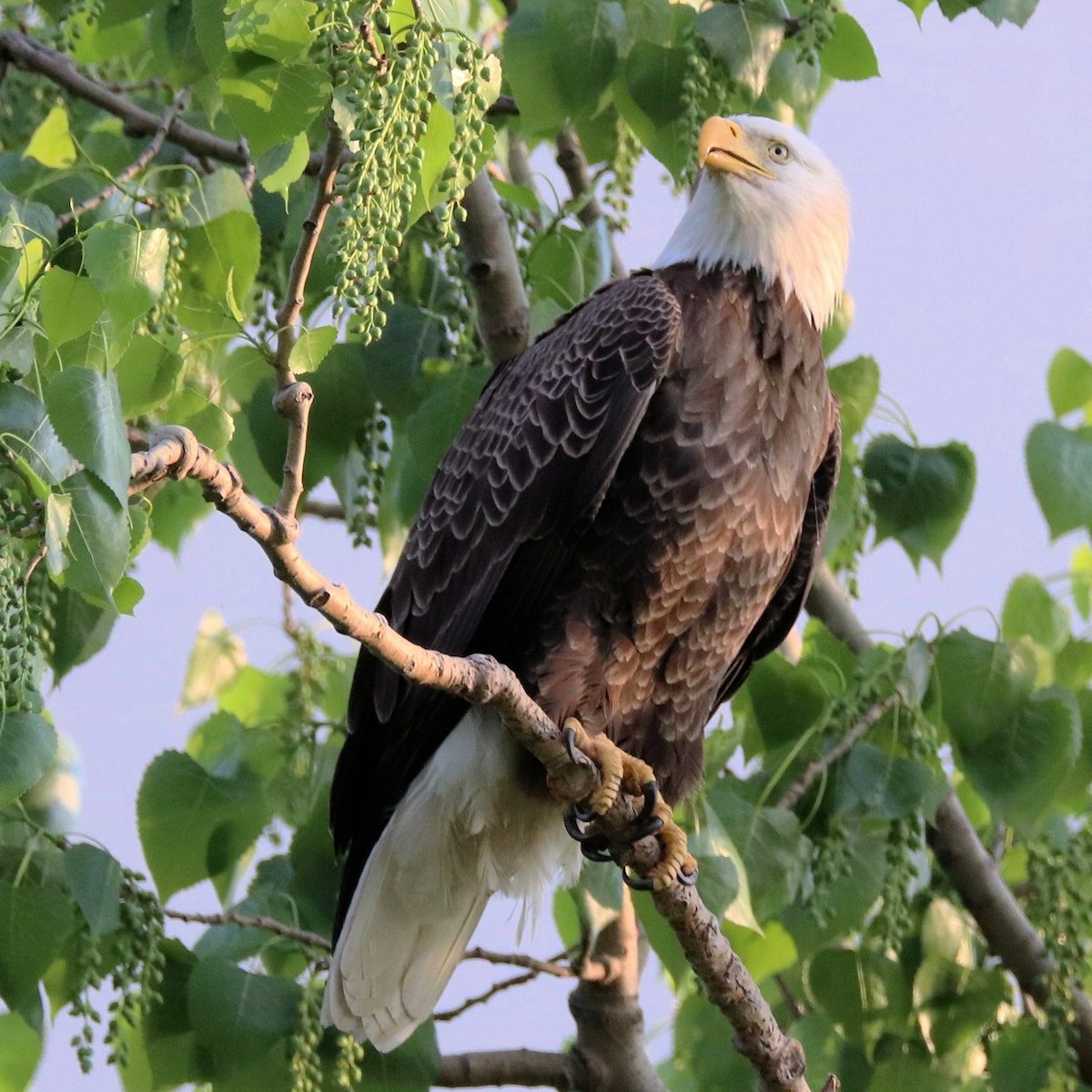From one remaining nest to more than 200, learn how endangered bald eagles bounced back to soar again in New Jersey.

New Jersey Takes Bald Eagles off Endangered List

On This Page
Are Bald Eagles Endangered?

In the bird world, there is no bird that inspires a sense of American patriotism like the bald eagle. Especially in early July, images of bald eagles are everywhere. They’re printed on napkins, stitched onto shirts, and even painted on motorcycle tanks. That said, seeing a real bald eagle can prove tricky — and in New Jersey, there was once a very real risk of not seeing one at all.
Thankfully, that’s no longer the case. As of January 2025, New Jersey’s bald eagles have rebounded to the point where they’ve been delisted as endangered. Getting them to that point took decades of hard work and determination, both on the part of the eagles and the humans who helped them.
Surmounting Obstacles

For those who have been with the Department of Environmental Protection (DEP) for many years, the recovery is cause for celebration. “I am old enough to have been here my whole career, and when I started, there was exactly one bald eagle nest in the state — and even that one nest had residual effects of DDT,” says Kathy Clark, chief of the DEP’s endangered and nongame species program. “I almost don’t even know how I feel about it, because it’s such a world of difference now.”
Don’t miss these stunning and inspiring bald eagle pictures.
The work initially focused on that one, DDT-impaired nest. Kathy explains that the difficult decision was made in 1982 to carefully intervene with the final nesting pair in order to ensure the safety of the eggs, which would not have hatched on their own. The eggs were removed from the nest and brought to Patuxent Research Refuge in Maryland, where they were incubated until they hatched. Following that, the chicks were safely returned to the nest for their parents to raise them.
“Over the years, because we had to do that from ’82 to ’88, the adults learned what was going on,” Kathy says. “I’m sure they saw the chicks right away, but our disturbance kept them away for that first year for at least an hour. Every successive year, the time it took for the adults to come back to the nest got shorter and shorter to the point where it was 15 minutes. They learned from us.”
Learn how to identify a golden eagle.
Habitat Loss and Outside Help
Early on, the eagles faced further obstacles in the form of potential habitat loss. A mining company owned the site New Jersey’s sole bald eagle nest rested on, which posed a threat to the nest. Kathy remembers the case going to court — and the outcome. “Our lawyers argued that this was the last eagle nest in New Jersey,” she says, highlighting that mining would mean removing it. “No judge wanted to be making that decision.”
However, no matter how well-protected they are, one bald eagle pair can’t repopulate the state. To boost the numbers, the DEP got help from a surprising source: Canada. Each year from 1983 to 1990, the Canadian Wildlife Service supplied up to 10 young eagles in exchange for the DEP funding surveys to determine which nests had two chicks. No more than 10 eagles were taken in a year, and a bird was only ever removed from a nest with multiple young. From there, New Jersey would band and release the birds when they were ready. In total, Canada supplied New Jersey with 60 birds.
Psst—the National Eagle Center is a winter birding paradise.
Continued Monitoring of Bald Eagles

Today, nearly 300 bald eagle pairs reside in the state — a massive increase from that one, lonely nest. Kathy says eagles have now taken up residence in all 21 counties in New Jersey. That’s cause for joy both within the DEP and outside it. “We still get people reporting them to us, which is great,” she says. “It gives me hope that even after delisting, people are not going to let their guard down when it comes to eagles. They do want to see them protected in New Jersey.”
With that said, there are some threats that humans can’t mitigate. Avian flu has been an increasing problem among waterfowl populations. Because waterfowl are a source of food for eagles, it becomes a problem for them, too. When eagles consume diseased waterfowl, they can get sick.
Thankfully, Kathy says New Jersey’s populations have only seen a slight decrease. “I really hope our eagles are going to escape that,” she says, emphasizing that avian flu is a threat that requires continued monitoring.
A Remarkable Recovery

It’s not too large of a stretch to assume many in the state hope for the eagles’ safety. After all, as Kathy points out, “Everyone wants to see these birds.” Whether they’re nesting in a remote swamp, a big tree in an urban area, or even on power lines or cell towers — which, Kathy mentions, they have — there’s a certain majesty that accompanies the sight of a bald eagle soaring overhead.
And for Kathy, a point of personal pride comes from an unexpected source: uncertainty. In her case, it’s a symptom of a hard-fought battle — and in the context of this victory, it’s welcome. “Over the years, there was a time when I knew every single nest,” she says. “Now, I don’t.”
Next, read the heartwarming rescue story of a bald eagle with a broken beak.
About the Expert
As chief of the endangered and nongame species program, Kathy Clark has worked for the New Jersey Department of Environmental Protection for more than 20 years. During that time, she has worked to preserve habitat and health for many bird species in New Jersey, including bald eagles.




















